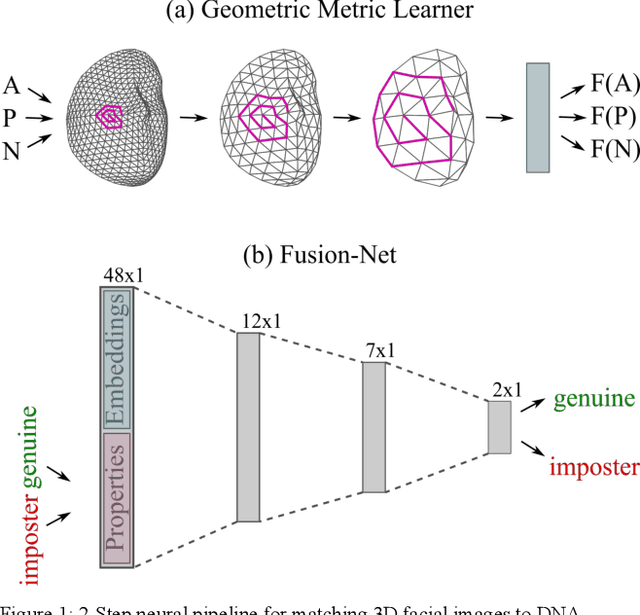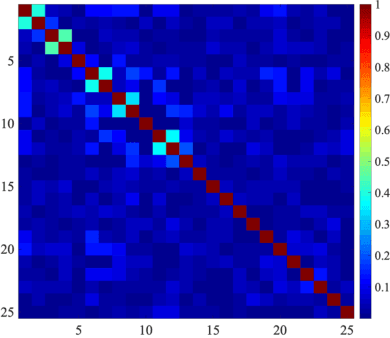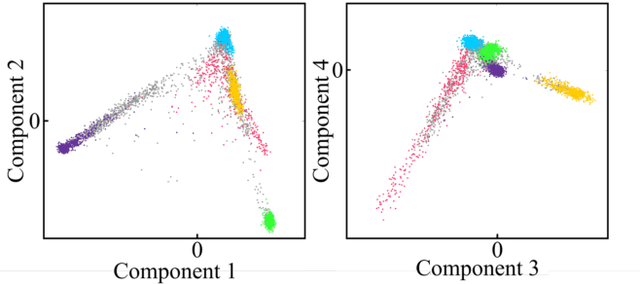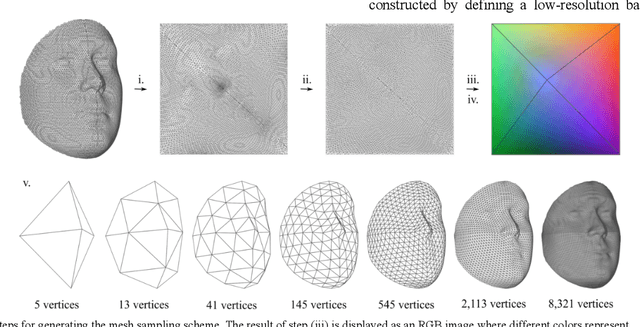Peter Claes
KU Leuven, ESAT/PSI - UZ Leuven, MIRC, KU Leuven, Department of Human Genetics
Attention Maps in 3D Shape Classification for Dental Stage Estimation with Class Node Graph Attention Networks
Sep 09, 2025Abstract:Deep learning offers a promising avenue for automating many recognition tasks in fields such as medicine and forensics. However, the black-box nature of these models hinders their adoption in high-stakes applications where trust and accountability are required. For 3D shape recognition tasks in particular, this paper introduces the Class Node Graph Attention Network (CGAT) architecture to address this need. Applied to 3D meshes of third molars derived from CBCT images, for Demirjian stage allocation, CGAT utilizes graph attention convolutions and an inherent attention mechanism, visualized via attention rollout, to explain its decision-making process. We evaluated the local mean curvature and distance to centroid node features, both individually and in combination, as well as model depth, finding that models incorporating directed edges to a global CLS node produced more intuitive attention maps, while also yielding desirable classification performance. We analyzed the attention-based explanations of the models, and their predictive performances to propose optimal settings for the CGAT. The combination of local mean curvature and distance to centroid as node features yielded a slight performance increase with 0.76 weighted F1 score, and more comprehensive attention visualizations. The CGAT architecture's ability to generate human-understandable attention maps can enhance trust and facilitate expert validation of model decisions. While demonstrated on dental data, CGAT is broadly applicable to graph-based classification and regression tasks, promoting wider adoption of transparent and competitive deep learning models in high-stakes environments.
Unsupervised Diffeomorphic Surface Registration and Non-Linear Modelling
Sep 28, 2021


Abstract:Registration is an essential tool in image analysis. Deep learning based alternatives have recently become popular, achieving competitive performance at a faster speed. However, many contemporary techniques are limited to volumetric representations, despite increased popularity of 3D surface and shape data in medical image analysis. We propose a one-step registration model for 3D surfaces that internalises a lower dimensional probabilistic deformation model (PDM) using conditional variational autoencoders (CVAE). The deformations are constrained to be diffeomorphic using an exponentiation layer. The one-step registration model is benchmarked against iterative techniques, trading in a slightly lower performance in terms of shape fit for a higher compactness. We experiment with two distance metrics, Chamfer distance (CD) and Sinkhorn divergence (SD), as specific distance functions for surface data in real-world registration scenarios. The internalised deformation model is benchmarked against linear principal component analysis (PCA) achieving competitive results and improved generalisability from lower dimensions.
3D Facial Matching by Spiral Convolutional Metric Learning and a Biometric Fusion-Net of Demographic Properties
Sep 10, 2020



Abstract:Face recognition is a widely accepted biometric verification tool, as the face contains a lot of information about the identity of a person. In this study, a 2-step neural-based pipeline is presented for matching 3D facial shape to multiple DNA-related properties (sex, age, BMI and genomic background). The first step consists of a triplet loss-based metric learner that compresses facial shape into a lower dimensional embedding while preserving information about the property of interest. Most studies in the field of metric learning have only focused on Euclidean data. In this work, geometric deep learning is employed to learn directly from 3D facial meshes. To this end, spiral convolutions are used along with a novel mesh-sampling scheme that retains uniformly sampled 3D points at different levels of resolution. The second step is a multi-biometric fusion by a fully connected neural network. The network takes an ensemble of embeddings and property labels as input and returns genuine and imposter scores. Since embeddings are accepted as an input, there is no need to train classifiers for the different properties and available data can be used more efficiently. Results obtained by a 10-fold cross-validation for biometric verification show that combining multiple properties leads to stronger biometric systems. Furthermore, the proposed neural-based pipeline outperforms a linear baseline, which consists of principal component analysis, followed by classification with linear support vector machines and a Naive Bayes-based score-fuser.
 Add to Chrome
Add to Chrome Add to Firefox
Add to Firefox Add to Edge
Add to Edge